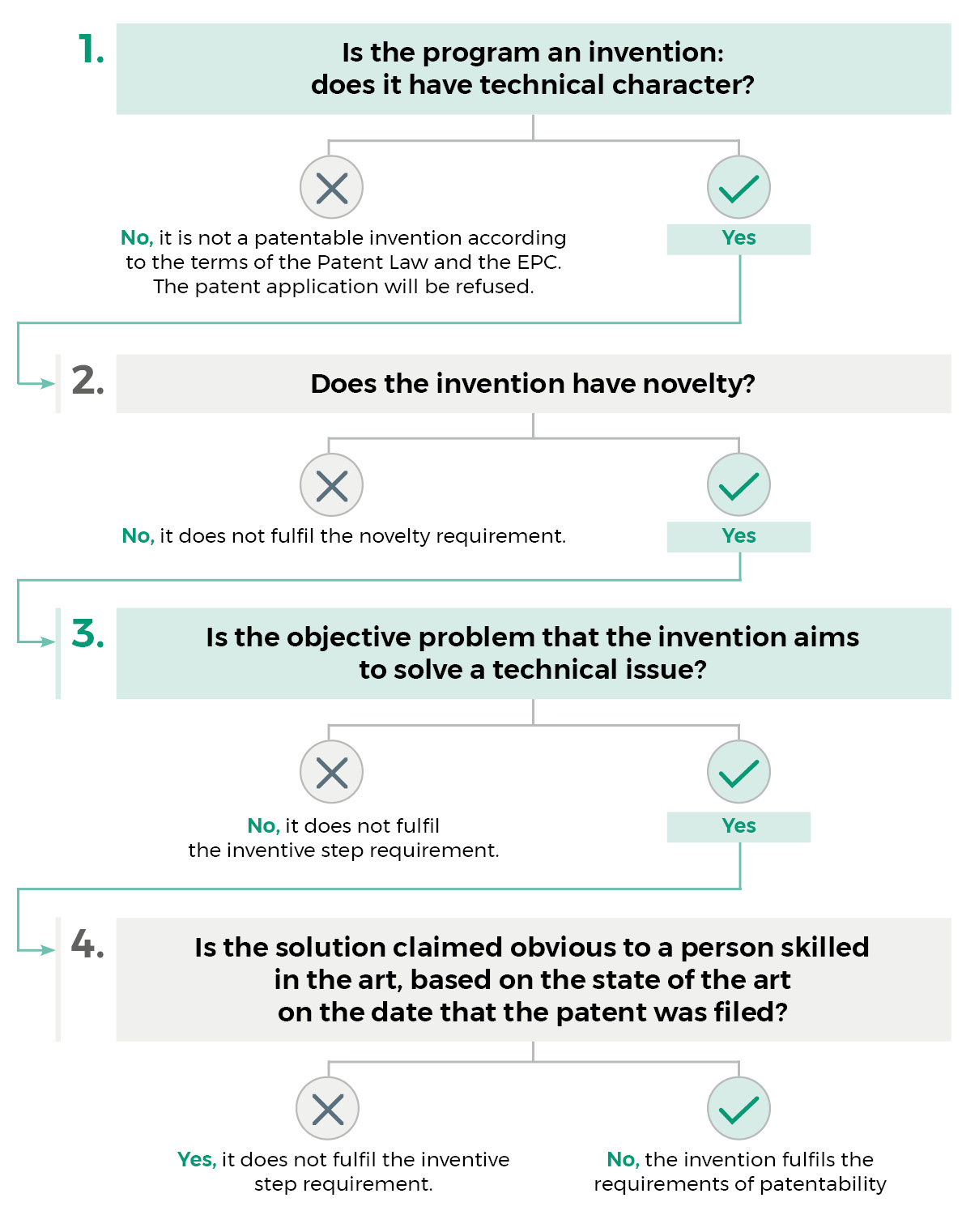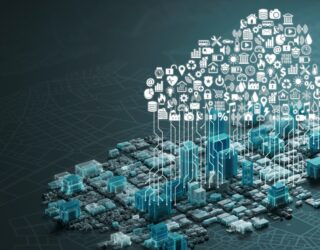The Spanish legal system does not consider computer programs to be inventions as such, so that, in itself, software is not patentable. However, inventions implemented using a computer, this is, computer programs that solve a technical problem can be registered as patents. Therefore, the key to registration is the ability to demonstrate that executing the software will solve a technical problem.
As we mentioned in a previous entry when discussing the options for protecting a website (available here), the software that enables that website to operate could be protected by patent. Although according to article 4.4 c) of the Patent Law, computer programs cannot be considered an invention, section 5 of the same article limits this exclusion to computer programs considered as such.
In this regard, the expression “considered as such” is interpreted as referring to inventions that represent a purely abstract concept, devoid of any technical implications, i.e. that do not provide any technical effect. Therefore, an object – in this case, a computer program – coming under the exclusions defined in article 4.4 of the Patent Law could be patentable if it has a technical effect of some kind.
Hence, it would be possible to patent in Spain and in other territories, including the European Union, so-called “computer implemented inventions” meaning those which, in order to be put into practice, require a computer, a computer network or other programmable apparatus, where the execution of the computer program produces a technical effect that is part of the solution to the technical problem raised.
Therefore, in addition to fulfilling all standard patentability requirements (i.e. novelty, inventive step and industrial application), the first obstacle to be overcome by software in order to be successfully patented is that they must be considered a patentable invention. This means that they must have the technical character inherent to every invention in the sense of the Patent Law and the European Patent Convention, this is, a technical effect beyond the mere interaction of the program with the hardware.
In other words, if the result of executing the computer program is not likely to be considered an invention in the sense of the Patent Law, the fact that it is executed using a computer program would not be enough to fulfill the technical character requirement; the program would need to have an additional technical effect beyond its simple interaction with the computer.
Therefore, programs that do not solve a technical problem cannot be protected by patent. This is the case of software that provides a response to mere mathematical problems, for example, a program that generates random combinations for a draw or lottery; commercial problems such as automatic mailing of welcome messages to new newsletter subscribers; or those of an economic kind- for example, a software for estimating sales figures, because none of these methods resolve a technical problem.
As the title of this article suggests, “First solve the problem, then, write the code ” to quote John Johnson, the focus of the patentability examination of a computer program does not lie in the software code, but in its ability to provide a response to a technical problem.
In order to establish whether a program has the requisite technical character, we must identify the objective problem that it resolves. As a result, the way in which the claims are drafted is of vital importance.
Let’s see, for instance, the case a of vascular mapping scanning software for identification purposes.
Analyzing the solutions available in the state of the art for identifying individuals, such as face or fingerprints scanners, the differential characteristics of the invention proposed would lie in the use of a practically inalterable characteristic as a reference. In this way, the proposed software, used jointly with pertinent scanning devices, would provide an improvement in the identification of individuals, reducing the margin of error to which existing systems are exposed because the characteristics that they use as a reference can be altered. This is the objective problem solved by the invention. Because the result cannot be altered by changes to or erasure of finger prints, for example, or a change in facial appearance, due to weight change, surgery, lifestyle or the passage of time, or, for reasons as common as the current use of facemasks. Ultimately, the question is that this is a technical problem, because this method of identification results in increased precision and reliability.
In short, examination of a computer program’s patentability can be summarized in the following questions:

Despite the seemingly demanding requirements of patentability, the protection of software by patent is an attractive option, especially taking into account the objective scope and the guarantees that it offers, as well as possible tax benefits, commonly known as Patent Box, which we have talked about here and which we will address in further detail in another blog entry.
In cases where obtaining a patent is really not an option, there are other means of protection worth exploring, such as intellectual property rights, which basically protect the source code, or trade secret protection.
Polina Shishkunova
Intellectual Property Department






